Nova MENTOR 7 Paraglider – Power Meets Precision for XC Excellence
The Nova MENTOR 7 Paraglider isn’t just another EN B wing—it’s a revolutionary step forward in cross-country capability and handling finesse. Built for pilots who demand maximum performance without stepping into a higher category, the MENTOR 7 delivers next-level glide, confidence, and control. If you’re ready to push boundaries, then this is the glider that will take you there—faster, farther, and safer.
Nova MENTOR 7 Paraglider Performance That Pushes the EN B Limit
Designed with cutting-edge two-liner technology on a three-liner base, the Nova MENTOR 7 Paraglider bridges performance and safety like never before. Because of this hybrid design, you’ll enjoy significantly improved glide ratios and better pitch stability without sacrificing user-friendliness.
Additionally, the profile cuts through turbulent air with authority. You stay efficient, fast, and balanced—even when the thermals get rowdy. That means longer flights, more kilometers, and higher satisfaction with every outing.
Intuitive Handling, Immediate Feedback
Handling is where the MENTOR 7 truly excels. The brakes feel crisp, direct, and highly responsive—yet forgiving enough to inspire confidence. Whether you’re centering tight thermals or gliding on bar through active air, the wing gives precise feedback. So, your inputs feel natural and fluid.
Moreover, the combination of its balanced roll behavior and direct handling helps you optimize every climb. As a result, even weaker thermals become usable, and efficiency becomes second nature.
Nova MENTOR 7 Paraglider Launch and Land With Ease
Although high in performance, the Nova MENTOR 7 Paraglider doesn’t forget where the flight begins and ends. Launch characteristics are forgiving—thanks to its intelligent line layout and canopy tension. Inflation is smooth, controlled, and predictable, even in light or crosswind conditions.
Similarly, landing is just as simple. The flare window is generous, and descent behavior remains stable and manageable. Therefore, you can focus on your approach, not your nerves.
Advanced But Accessible Safety
Of course, performance without safety is meaningless. That’s why the Nova MENTOR 7 Paraglider maintains exceptional passive safety. While it performs like a high-end EN B, its reactions remain predictable and recoverable. Unexpected collapses are rare. However, when they do occur, recovery is swift and drama-free.
In other words, you’re flying a glider that empowers you to take calculated risks with minimized consequences.
Nova MENTOR 7 Paraglider Engineered for XC Excellence
Built with durability and performance in mind, the MENTOR 7 uses Nova’s advanced materials and precision manufacturing. This wing holds its shape, tension, and efficiency over time—even with frequent use. So, whether you’re logging hours locally or traveling for that dream triangle, it’s built to perform.Nova ION 7 Light Paraglider
Take the Next Leap in Your Progression
If you’re an experienced pilot who wants more from every thermal, every glide, and every XC mission—then the Nova MENTOR 7 Paraglider is the upgrade you’ve been waiting for. Elevate your expectations. Fly with purpose. Go beyond.
Nova MENTOR 7 Paraglider Technical data
| Size | XS | S | M |
|---|---|---|---|
| CTW¹ (kg) | 70-95 | 80-105 | 90-115 |
| RTW² (kg) | 80-90 | 90-100 | 100-110 |
| Flat area (m²) | 23.36 | 25.69 | 27.99 |
| Projected area (m²) | 19.8 | 21.77 | 23.72 |
| Flat aspect ratio | 5.5 | 5.5 | 5.5 |
| Projected aspect ratio | 4.18 | 4.18 | 4.18 |
| Weight (kg) | 5.1 | 5.3 | 5.6 |
| Number of cells | 66 | 66 | 66 |
| Flat span (m) | 11.34 | 11.89 | 12.41 |
| Projected span (m) | 9.1 | 9.54 | 9.96 |
| Line diameter (mm) | 0.4 / 0.5 / 0.7 / 0.8 / 0.9 / 0.95 / 1.2 | ||
| Line length (m) | 6.81 | 7.14 | 7.45 |
| Max. chord (m) | 2.60 | 2.72 | 2.84 |
| Certification (EN/LTF) | B | B | B |
¹ CTW: Certified take-off weight in kilograms.
² RTW: Recommended take-off weight in kilograms.
Sizes XXS and L are available for the MENTOR 7 Light.
Colours
Standard colours: Blue, Lime, Orange.
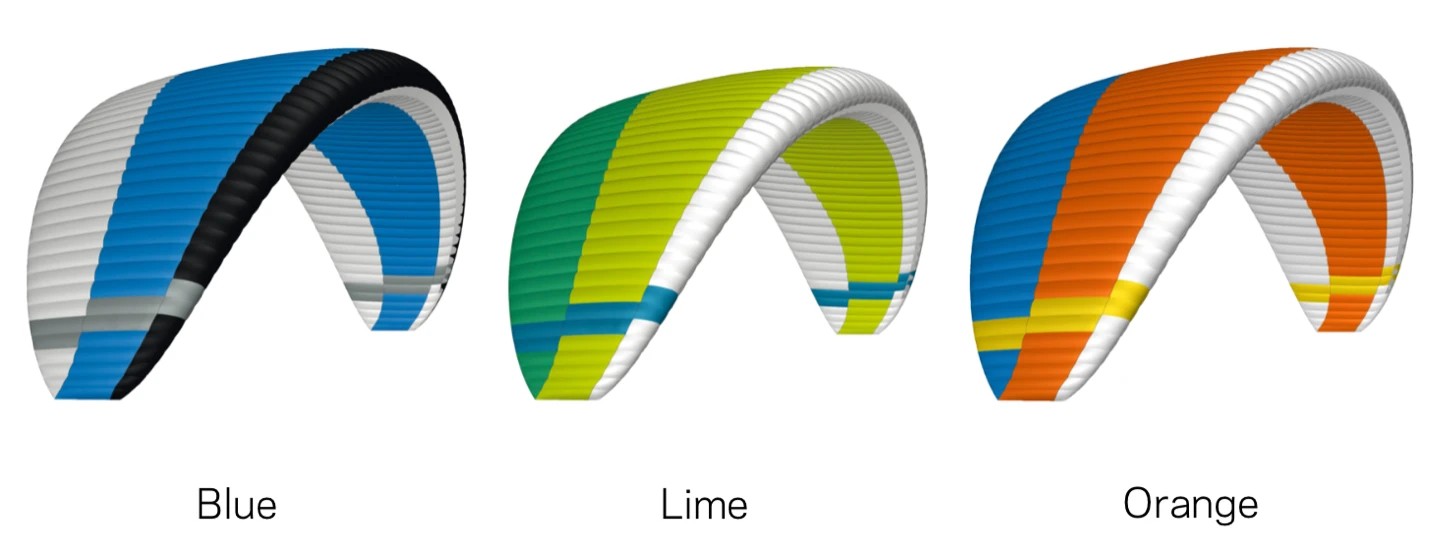
Custom colours: Choose your colours and email us the colour reference with your order. Include a screenshot if you can. Full payment required upfront to confirm your order after which it cannot be cancelled.
Nova MENTOR 7 Paraglider Package
- Concertina Bag Light
- Inflatable pack roll
- Manual
- Windsock
- Repair kit
- Speed system cords
Optional extras
- Nova Backpack
MENTOR 7 – The XC machine
Efficient en route. The 2.5-liner design of the MENTOR 7 combines performance and comfort in a unique way. Philipp Medicus, Head of R&D at NOVA explains: “The difference in design between the MENTOR 6 and 7 is greater than between the 2 and the 6. Through this innovative approach, the performance has drastically increased, without raising the demands on the pilot. The result is a cross-country paraglider that allows you to go big distances safely and efficiently.”
Designed for XC.
The MENTOR 7 was built for cross-country flying. Fully accelerated, it cuts solidly through turbulent air masses, and the C-riser-control can be used to efficiently mitigate turbulence. The safe and calm feeling when flying allows the pilot to stay focused and concentrate on tactical decisions – even on long flights. Despite its high stability, if the MENTOR 7 has a collapse, the reaction is manageable even at top speed. All NOVA test pilots confirm that this wing, with its moderate aspect ratio of 5.5, is very pleasant to fly and additionally has even more top speed than the MENTOR 6. The ideal prerequisites for new XC records.
Pitch control like a 2-liner
For optimal ergonomics, the risers of the MENTOR 7 are equipped with height adjustable C-handles (HAC-Handles). The C-handles allow pitch control during accelerated flight, which was previously reserved for two-liners like NOVA XENON. This means it is easy to compensate for turbulence and flying XC is far more efficient. Those with no previous experience of C-riser-control can take a relaxed approach to learning this new flight technology with the MENTOR 7 and gain a real performance advantage for themselves. Please note: how this C-riser-control works is explained in the FAQ below.
Elaborate design
In addition to the 2.5-liner concept, the MENTOR 7 is characterised by a complex inner life, 66 cells and additional rods in the rear are of the wing. These design features play a vital role in the outstanding performance of the paraglider. NOVA has cast aside their Easy Packing concept in favour of the clear performance advantage. To protect the rods, the MENTOR 7 should be packed using a Pack Roll, or wrapped around the harness, in a cell pack sack such as their Concertina Bag Light.
The risers in practice
The most prominent feature on the MENTOR 7’s new Speedbrake Riser 2.0 are the HAC-Handles. Another striking feature is the “Baby-B” line, which acts as a moveable pulley on the B3 line. This means the riser is a little more complex, but it is still clearly laid out and easy to handle even when launching. Good to know when ground handling: you can kill the MENTOR 7 very efficiently using the C-lines. As there is no C3 line, what does not work so well are asymmetric corrections via the C-lines. For lateral directional corrections, they therefore recommend using the brake. Please note: for more clarity during pre-flight preparation, a magnet holds the A and Baby-B risers together. For optimum launch behaviour, they recommend releasing the magnet and only holding the A-riser.

Pilot target group
The MENTOR 7 (EN/LTF B) is a state-of-the-art “teacher” in the tradition of the MENTOR series (performance, smooth in flight, safety). It does not tend to overshoot during inflation and impresses with an extreme flight behaviour that is manageable for its class. The hybrid 2.5-liner is suitable for cross-country pilots who are experienced in handling EN B gliders, or who want to get the maximum out of a flight using the speed-bar and HAC handles. Anyone wishing to familiarise themselves with pitch control similar to the flying feeling of a two-liner, this is the wing to fly. It is important to understand that the hybrid construction partly influences ground handling and means, for example, that the use of the B3 stall is more efficient than classic big ears.
New features
Hybrid design as a 2.5-liner. On the outer wing the MENTOR 7 is a two-liner, in the center a three-liner. This means this “2.5-liner” does not have a C3 line. The smart redistribution of the attachment points and a profile optimised for accelerated flying make the MENTOR 7 a comfortable and potentially record-breaking fast cross-country glider. At the same time, the safety and smoothness in flight remains typical of the MENTOR and accordingly the certification also resulted in EN B certification.
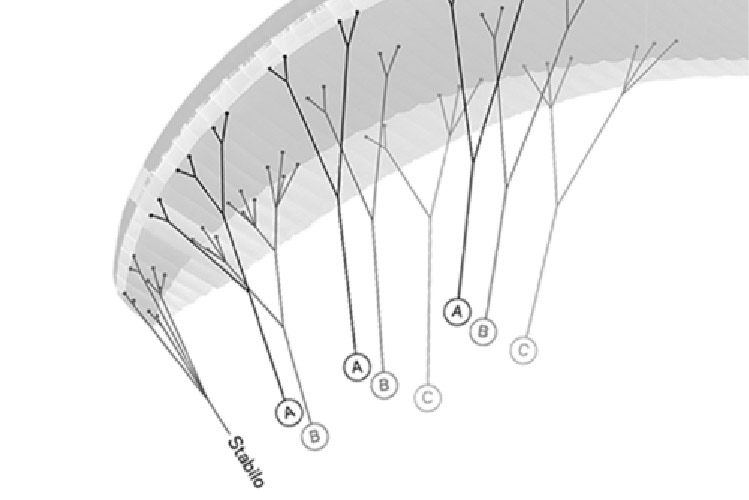
Speedbrake Riser 2.0 incl. HAC Handles.
The MENTOR 7 has HAC handles (Height Adjustable C-Handles) on the newly revised riser. With these, pitch movements in accelerated flight can be compensated for in the best possible way. This means that on cross-country flights you to get from A to B even more efficiently – i.e. faster and with less sink. In addition, the C-riser-control is very comfortable and requires little effort.
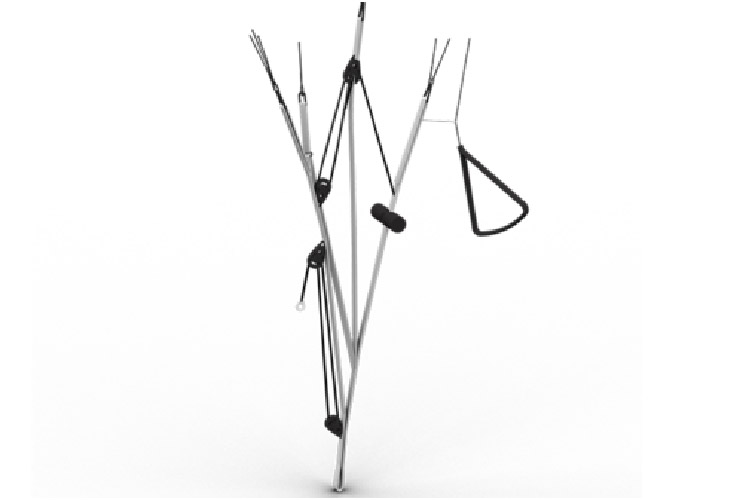
Aerodynamics optimised for speed.
The design of the MENTOR 7 focused on speed. The profile ensures a high degree of pitch stability even at low angles of attack. In numerous simulations, the ballooning as well as the stress distribution was refined to minimise the deformation of the glider when accelerated. The cell openings are designed so that the internal pressure remains ideal even in accelerated flight. The result is excellent glide performance with an exceptional level of stability.
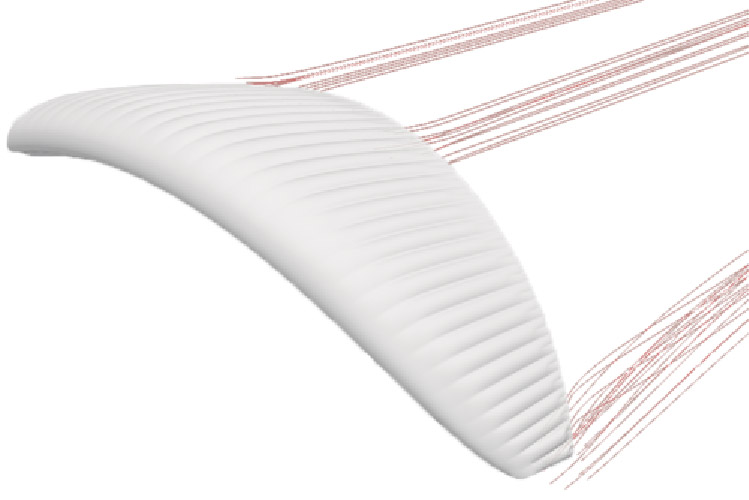
Nova MENTOR 7 Paraglider Technology
Two concepts combined
A 2-liner at the wing tips, a 3-liner in the centre. This means this “2.5-liner” does not have a C3-line. Reduced line metres means less drag. Thanks to the two line areas at the wing tip, during acceleration an aerodynamically favourable wing twist is possible. This increases the performance in accelerated flight. The design also enables particularly efficient C-steering.
Flat profile nose
Anyone who tries to fold a piece of paper around a ball will notice that there are always creases. The nose profile of a paraglider is the same – the sail cloth has to adjust to both the profile and ballooning effect (cells are round, not straight). Double 3D Shaping uses additional seams to reduce creasing and therefore increases the performance of the wing.
Under pressure
NOVA Air Scoop is an optimised air intake, which increases the internal wing pressure. NOVA’s Air Scoop principle is similar to the ram-air inlet duct on a sports car: increased airflow produces higher pressure. Higher internal pressure in a paraglider means improved performance through increased structural stability and collapse resistance.
More compact
The aspect ratio of a glider is not the only factor in passive safety, but still a very important one. A high aspect ratio favours cravats after asymmetric collapses, generally shortens brake travel and normally makes wings more difficult to fly. Nova’s analytical tools permit them to build performance wings even with a low or moderate aspect ratio.
Nova MENTOR 7 Paraglider Materials
| Leading edge: | Skytex 38 Universal, 38 g/m² |
|---|---|
| Top surface: | Skytex 38 Universal 38g/m², Skytex 40 Eazyfly 40g/m² |
| Lower surface: | Skytex 40 Eazyfly 40g/m² |
| Profile ribs (suspended): | Porcher Skytex 40 Hard, 40 g/m² |
| Profile ribs (unsuspended): | Porcher Skytex 40 Hard, 40 g/m² |
Nova MENTOR 7 Paraglider Lines
| Main lines: | Liros PPSL191 / Edelrid U-8001-130 |
|---|---|
| Gallery lines: | Edelrid U-8000 / DC40 |
| Brake lines: | Edelrid 7850-240 / Edelrid U-8000 / Liros DC40 |
| Risers: | Kevlar 12 mm |

FAQ
How does the C-steering work?
The so-called HAC handles (Height Adjustable C-Handles) are mounted on the C-risers. These permit a more efficient pitch control, usually only possible on two-liners. The effort required to apply them is so minimal, that even after a long flight they never cause fatigue. In accelerated flight, the HAC handles can be used to increase the angle of attack more quickly and sensitively than would be possible by releasing the speed bar. Additionally, asymmetrical corrections are possible, e.g. for a change of direction. In the end, the C-steering means it is possible to fly faster, more efficiently and in a more relaxed manner. At trim speed, if the HAC handles are pulled down about 20 cm, a stall occurs, but the pilot will know this in advance through pulsating feedback on the handles. Well before the stall, performance is noticeably reduced. It is therefore not advisable to permanently slow down the MENTOR 7 below trim speed.
Do I have to use the C-riser-control?
No. You can even remove the HAC-Handles. The C-steering is an additional option to compensate for pitching movements of the glider – especially in accelerated flight. When used correctly, they ensure efficient flight in turbulent air.
Why do Nova recommend using the B3 stall instead of big ears for the MENTOR 7?
The B3 stall offers more stability with a higher sink rate. Classic big ears also work, but are less comfortable due to the non-split A-risers.
What is the best way to pack the MENTOR 7?
We recommend folding the MENTOR 7 cell to cell and then placing the NOVA Pack Roll in the crease near the leading edge. The idea behind the Pack Roll is that this crease will be less pronounced, which protects the rods. NOVA Concertina Bag Light is perfect for the job and facilitates a smaller packing volume.
What is the difference between “certified” and “recommended” weight range?
The certified weight range defines the legal limits of the take off weight. The ideal combination of climb, stability and speed for maximum XC efficiency can be found within the recommended weight range.
Nova MENTOR 7 Paraglider info
Read Nova service info here.
Nova product registration
Register your Nova product here.


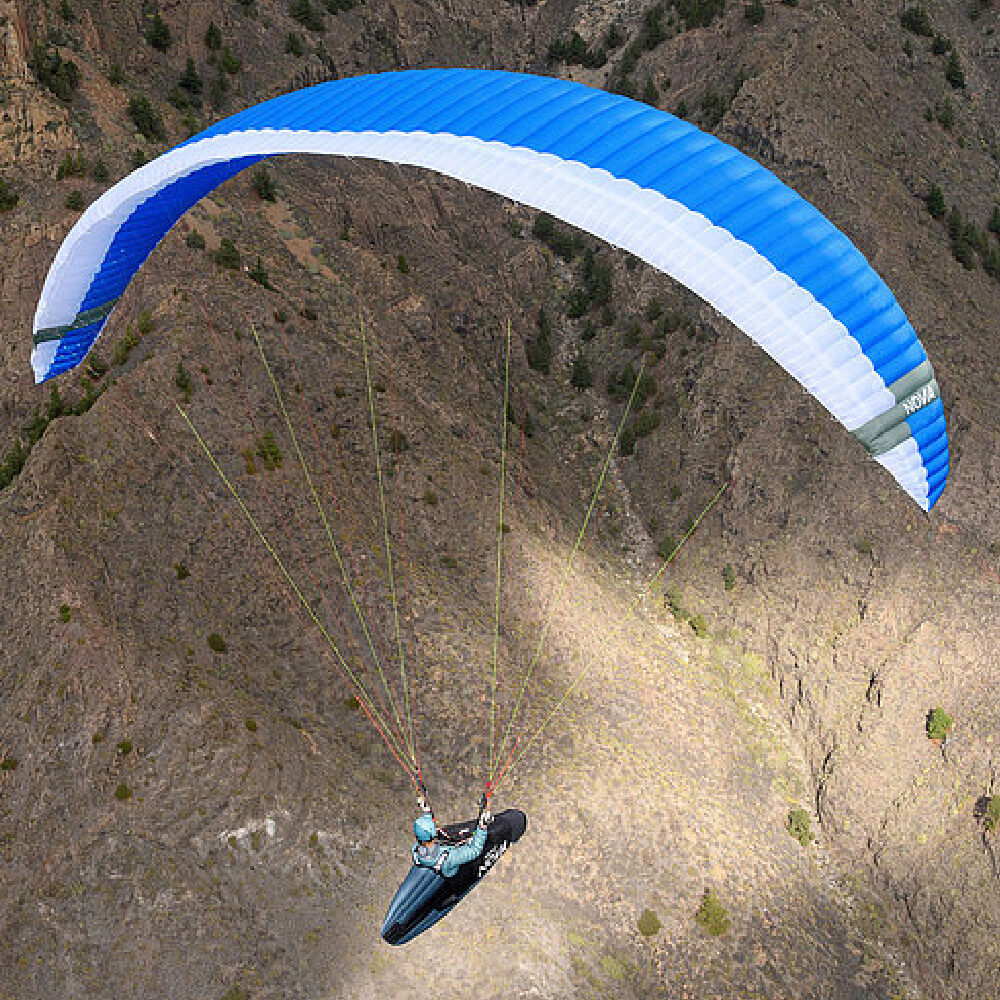
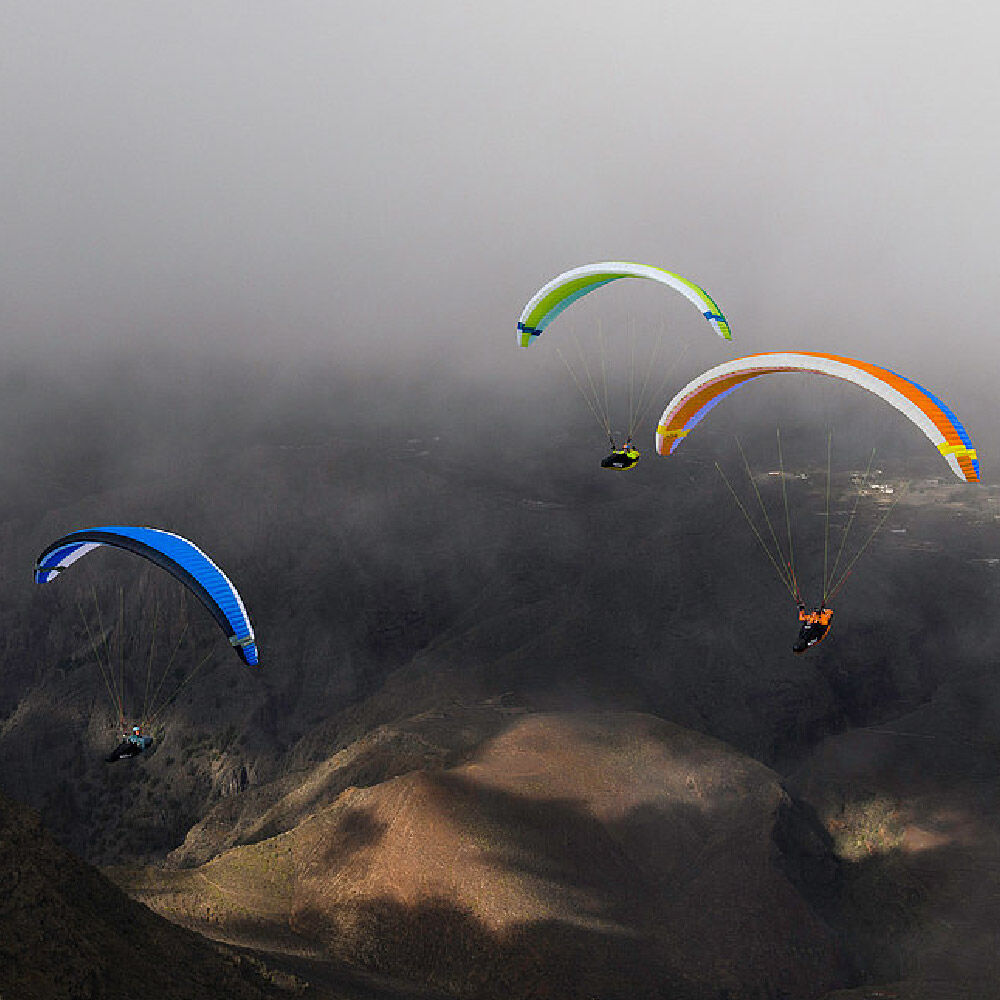

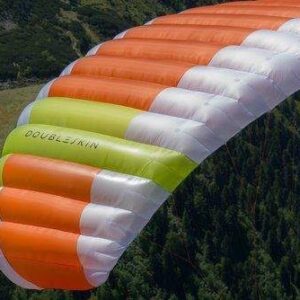
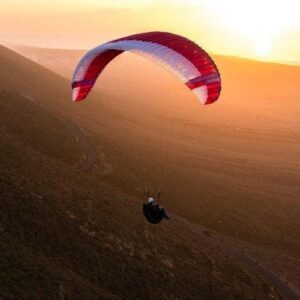

Reviews
There are no reviews yet.